Abstract
Temporal control appears to depend on whether the critical durations are those of stimuli or those of responses. Stimulus timing (temporal discrimination) supports Weber's law, whereas response timing (temporal differentiation) indicates decreasing relative sensitivity with longer time intervals. The two types of procedure also yield different conclusions in scaling experiments designed to study the functional midpoint of two or more durations (temporal bisection procedures). In addition, the fractional-exponent power relation between emitted and required duration usually found with animals in differentiation experiments conflicts with deductions from formal analyses. The experiment reported here derived from considering differentiation arrangements as schedules of reinforcement. When analyzed from this perspective, the procedures are tandem schedules involving a required pause followed by a response, and it is the pause alone that involves temporal control. A choice procedure separated timing from responding, and enabled observations of pause timing in isolation. Pure temporal control in differentiation consisted of linear overestimation of the standard duration, and Weber's law described sensitivity. These results indicate that the two problems, the fractional-exponent power relations and the apparently different nature of sensitivity in differentiation and discrimination, disappear when temporal control is observed alone in differentiation.
Full text
PDF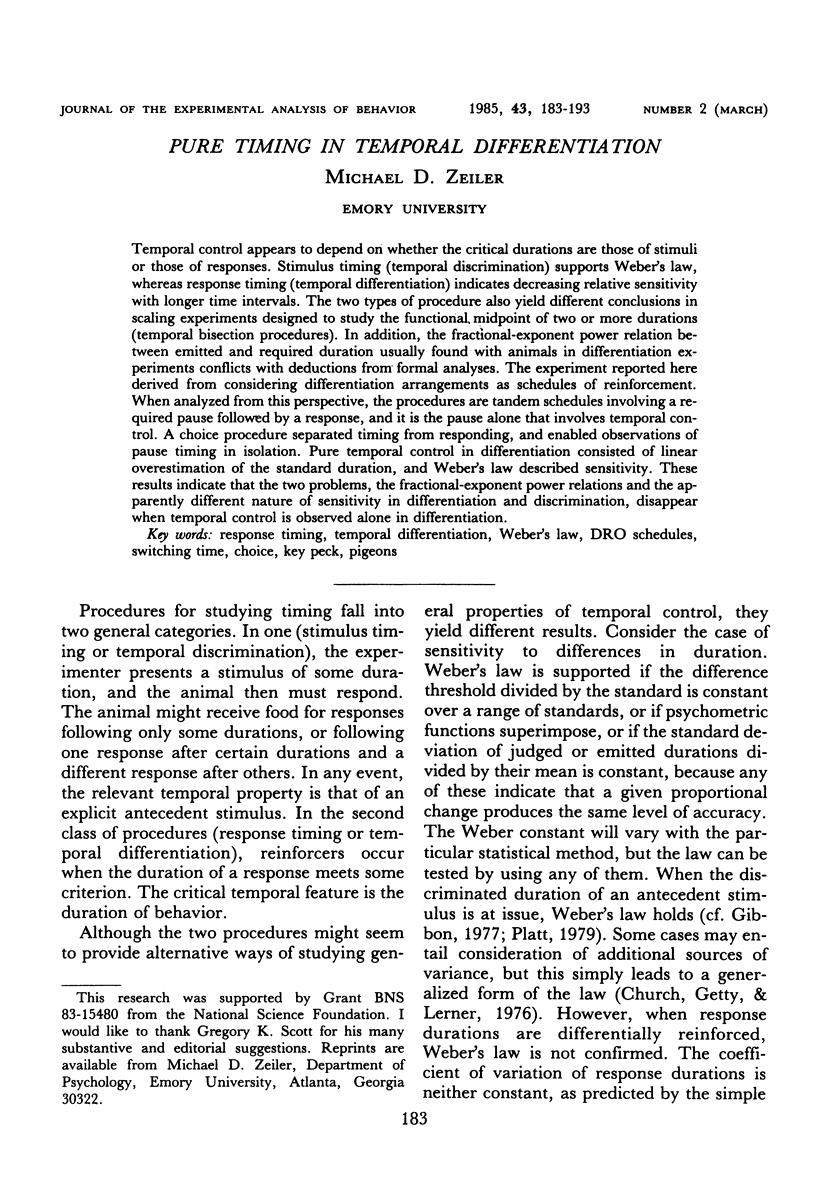
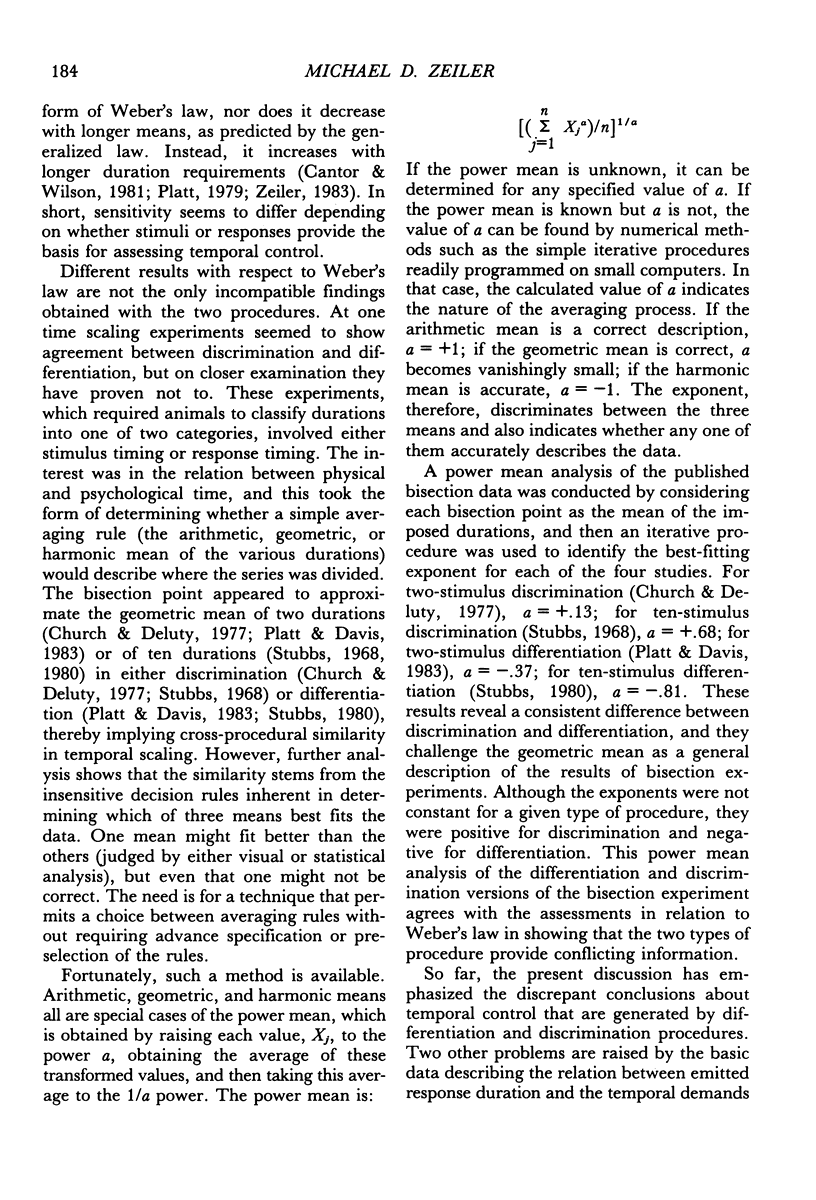
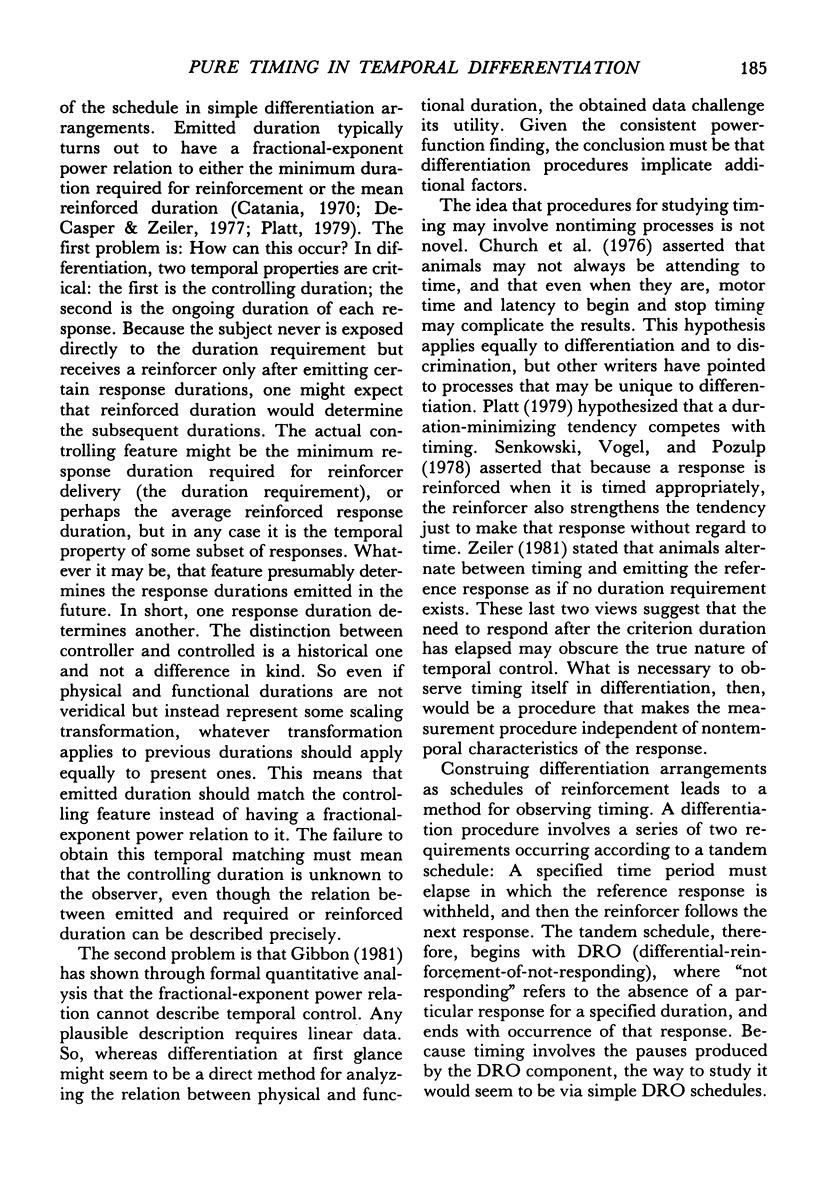
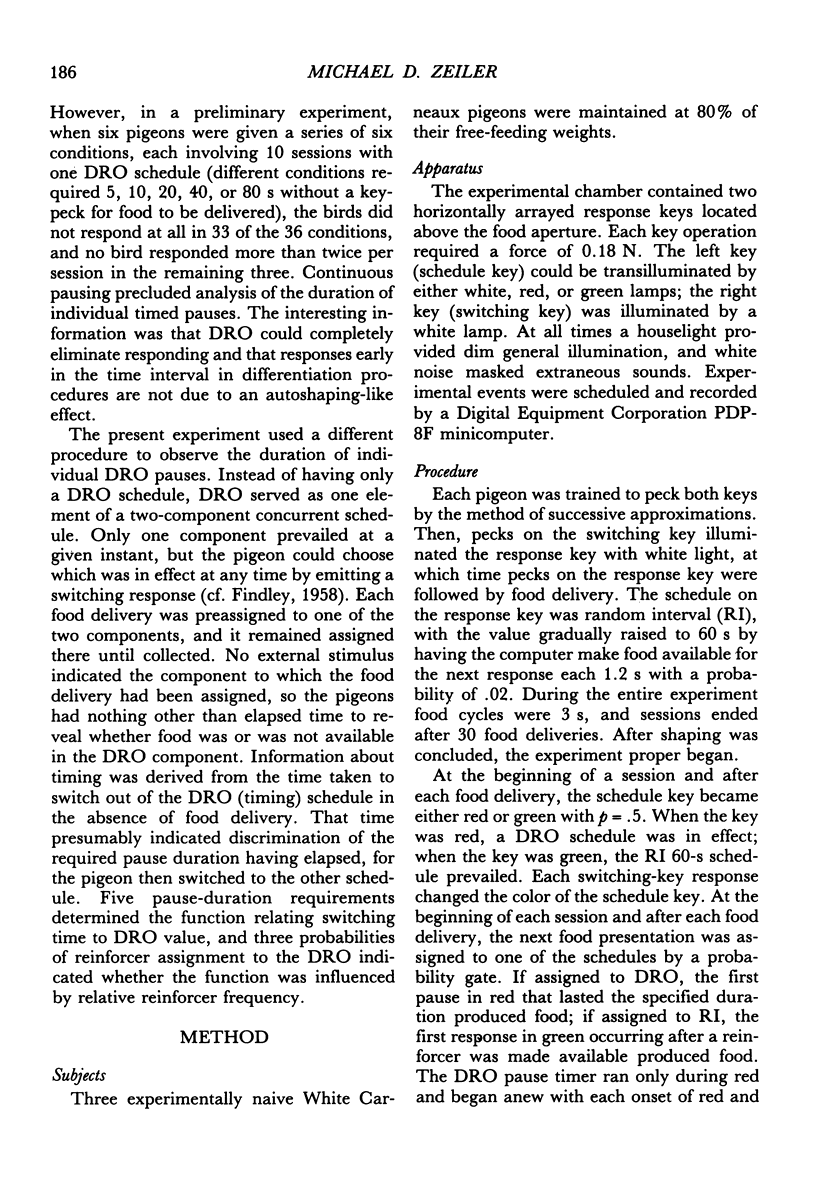
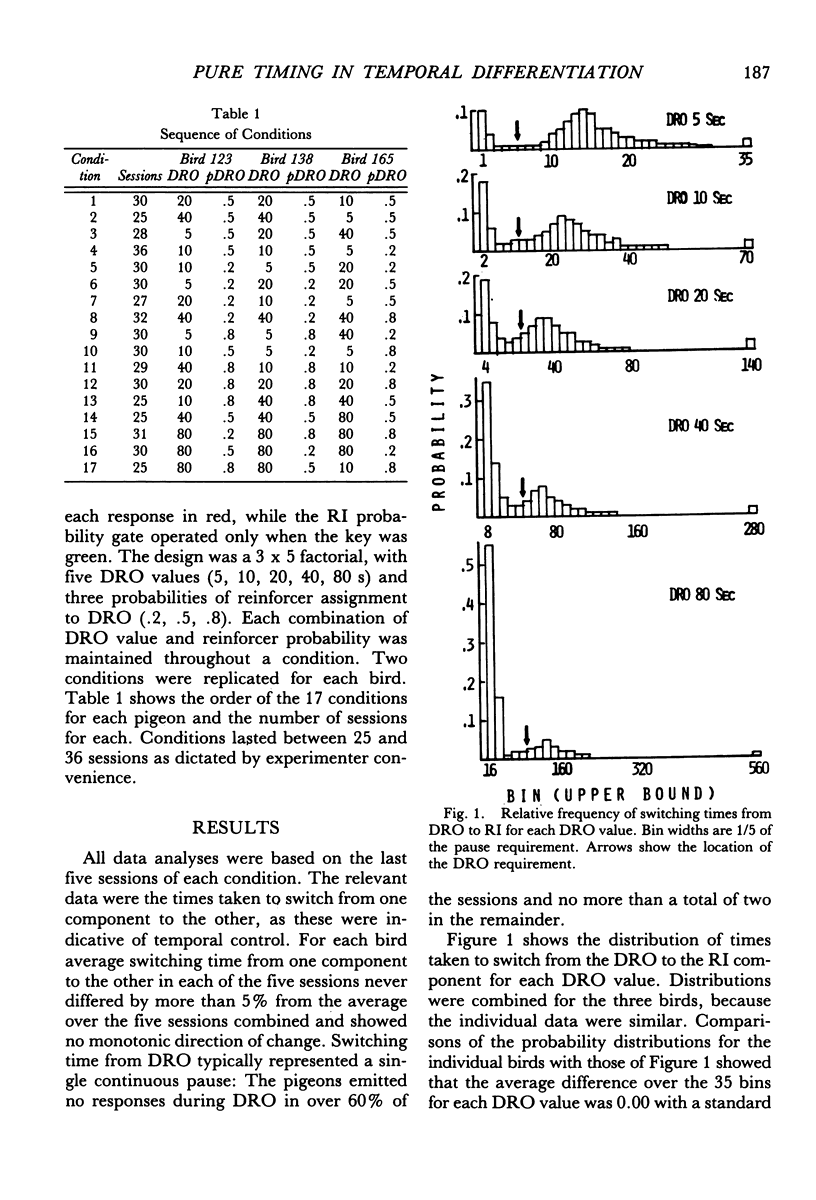
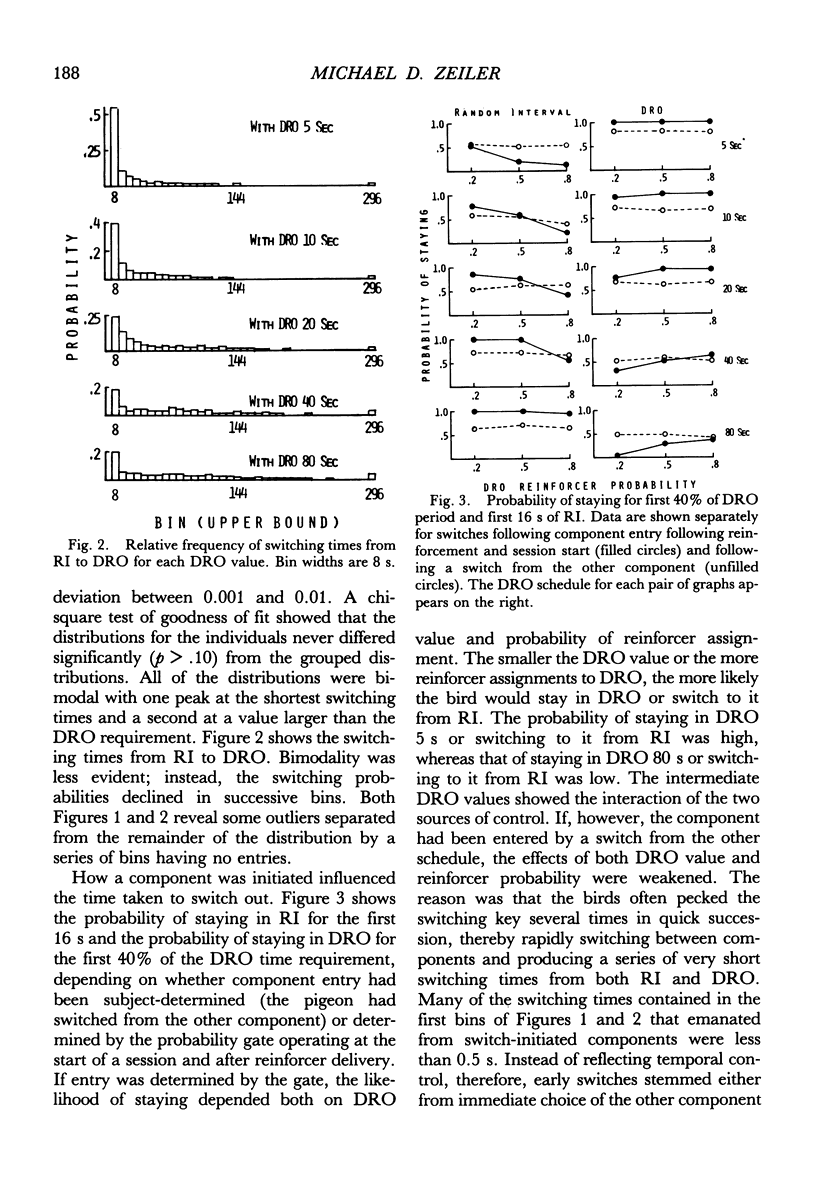
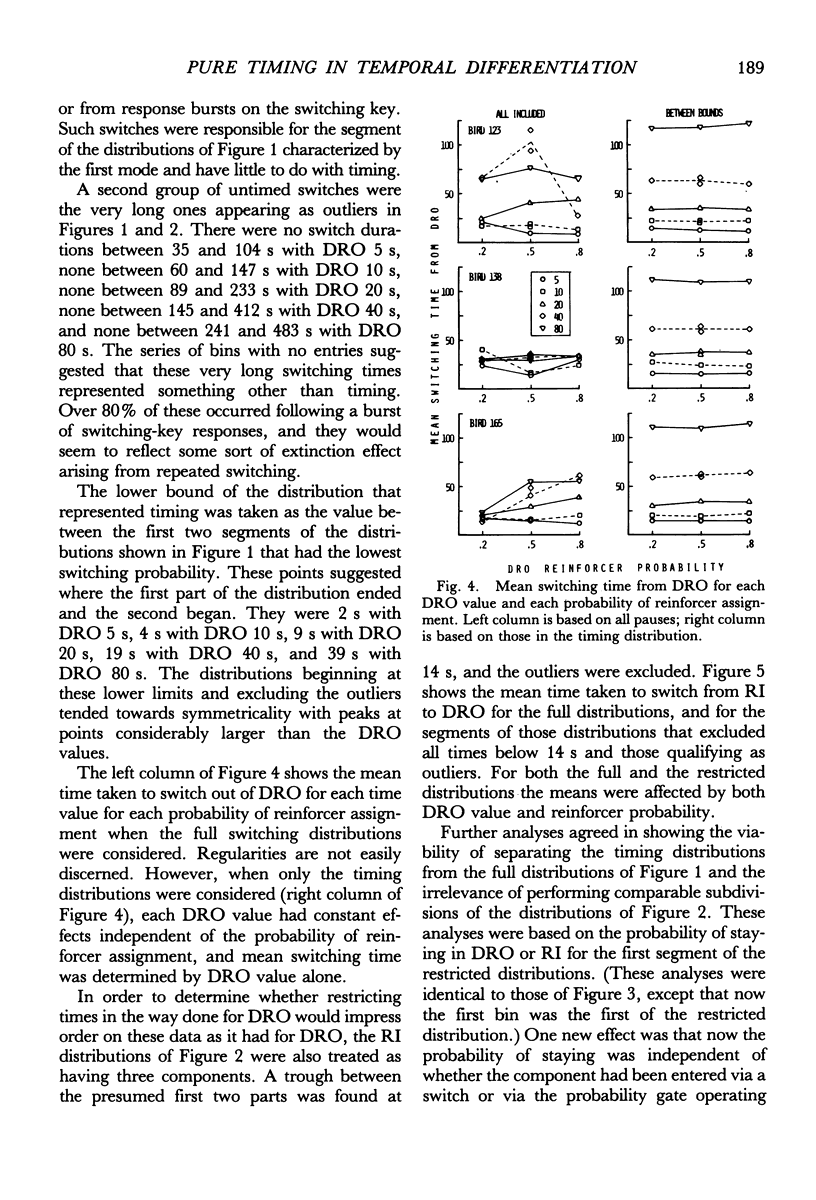
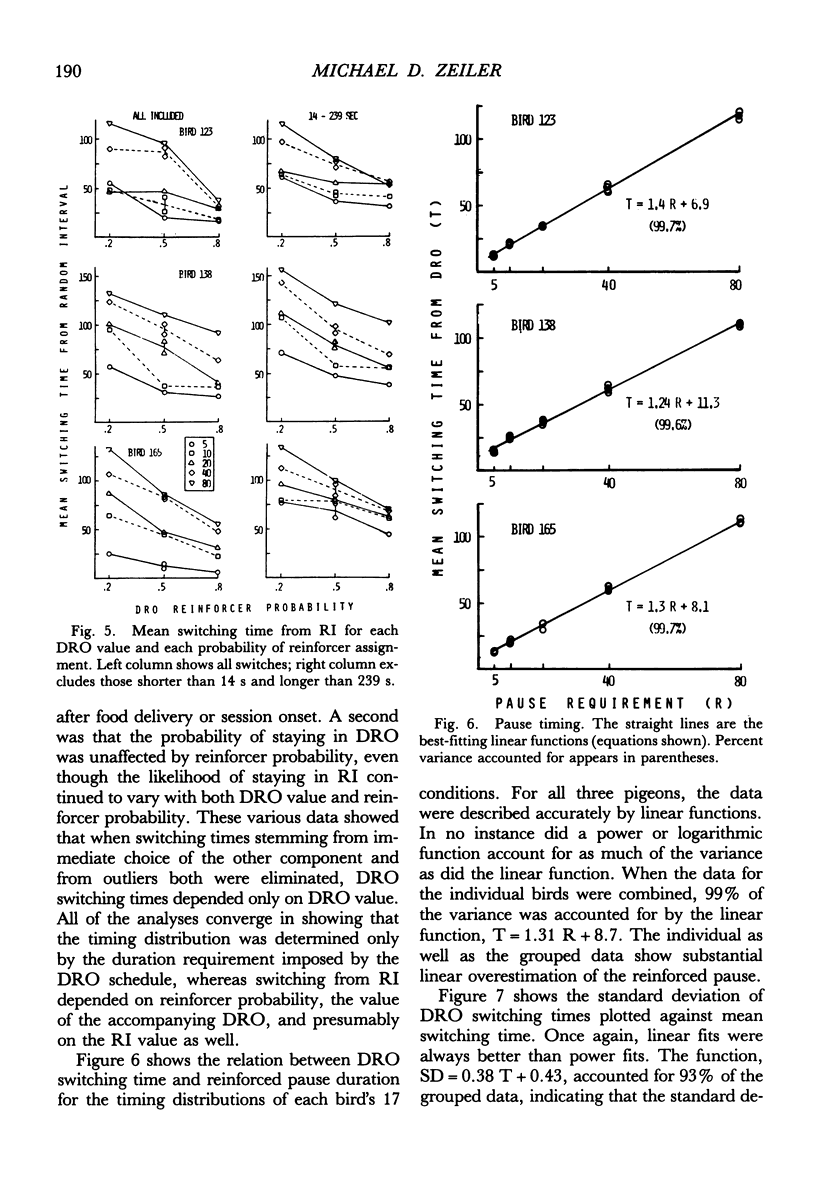
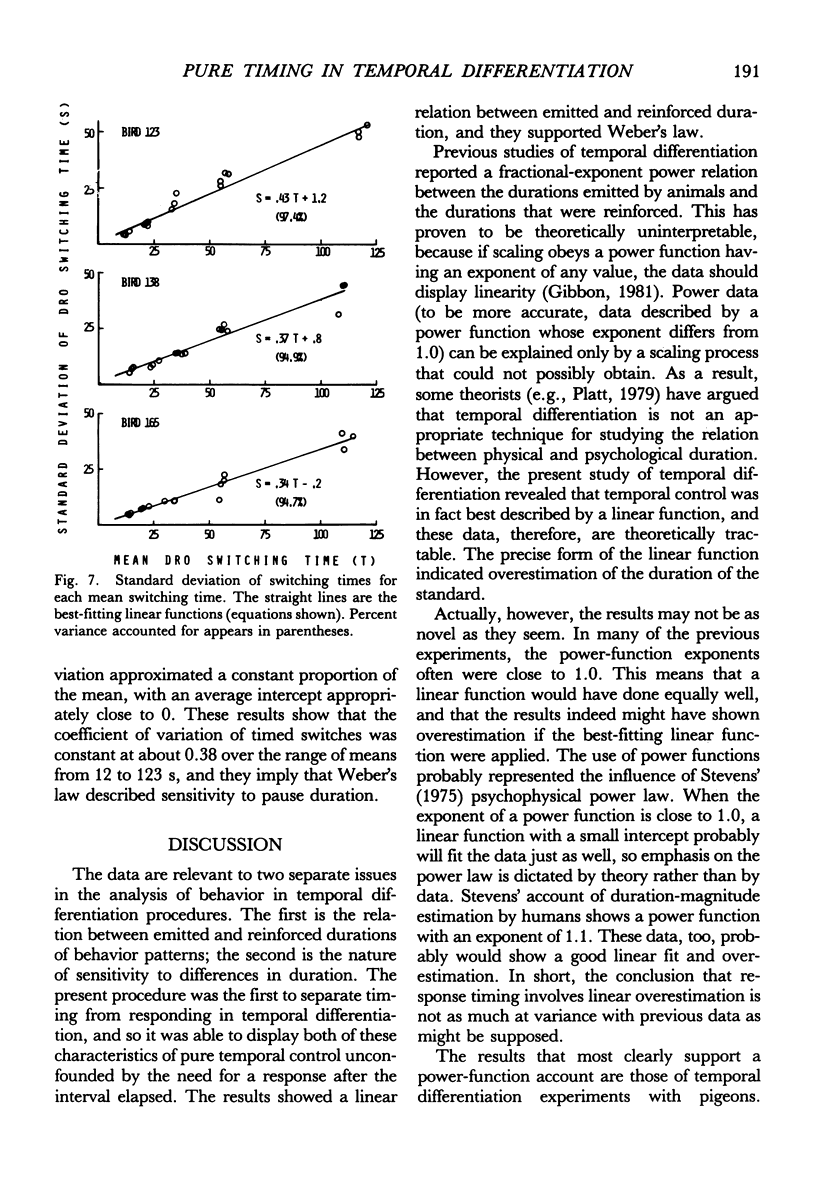
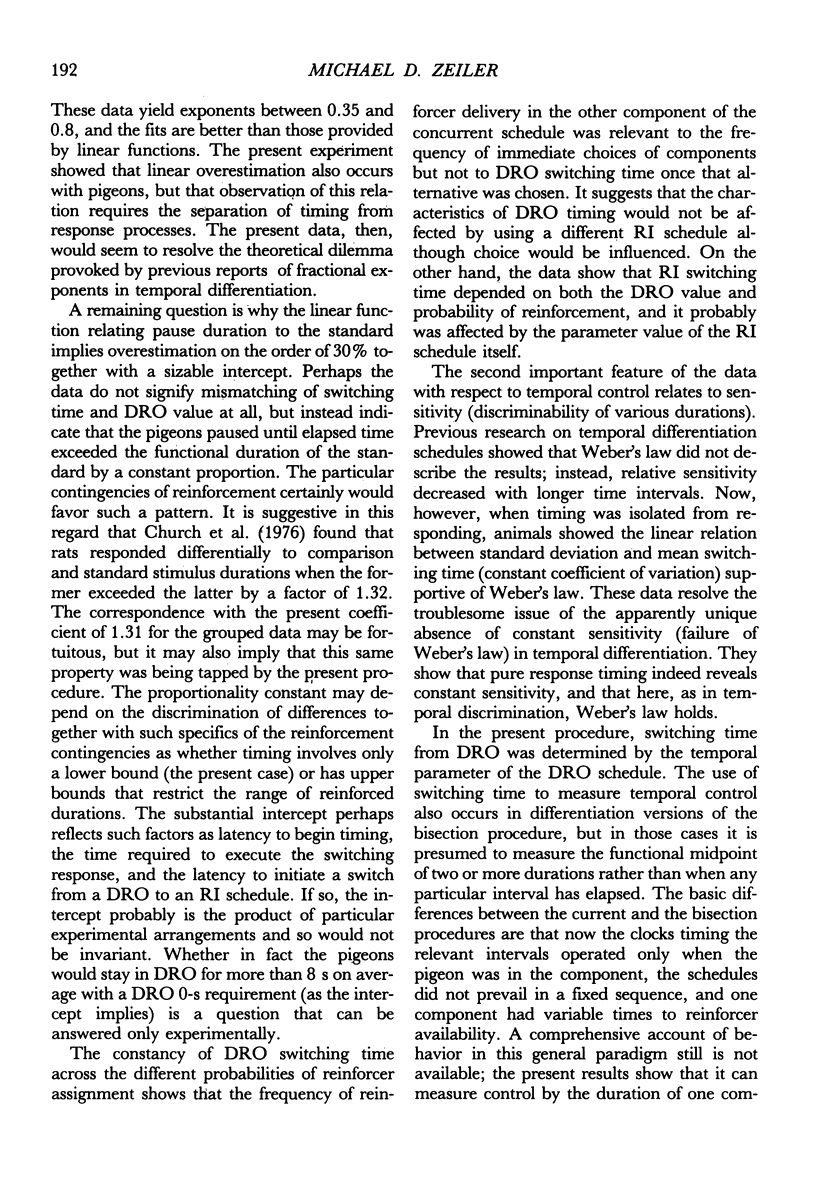
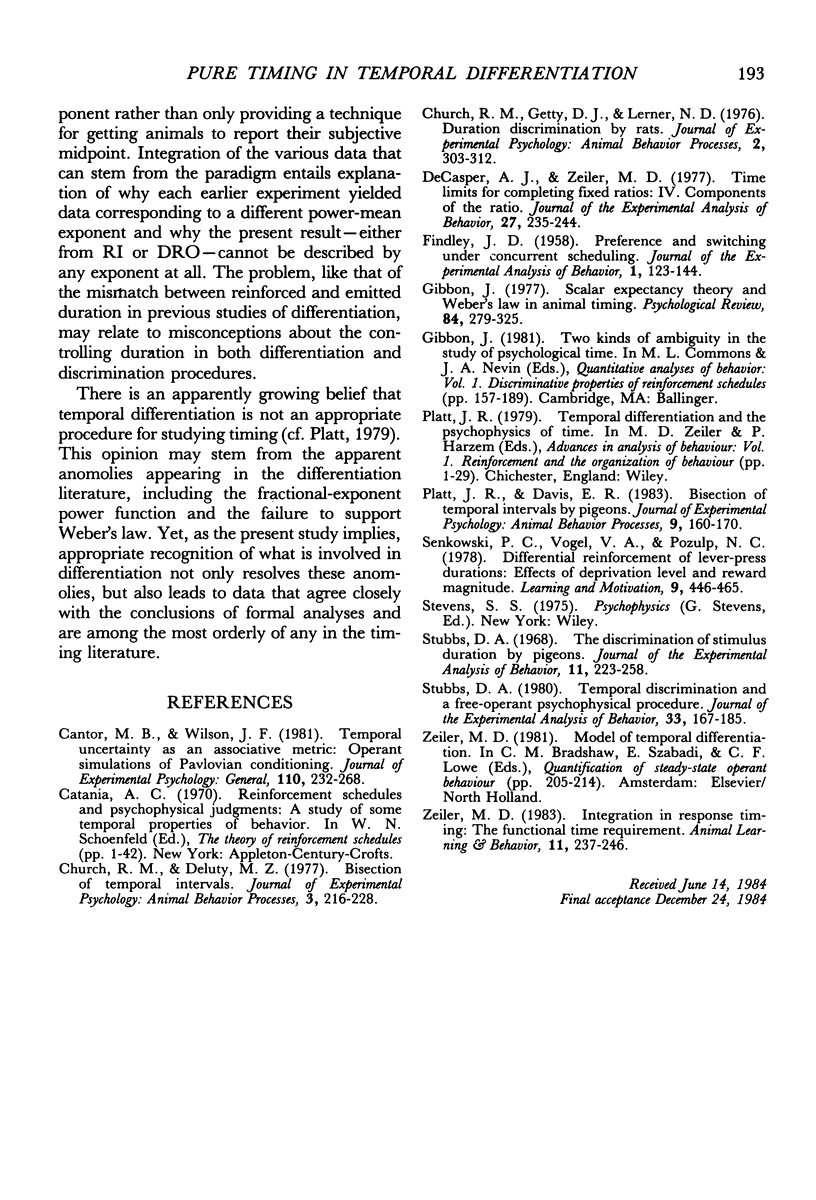
Selected References
These references are in PubMed. This may not be the complete list of references from this article.
- Church R. M., Deluty M. Z. Bisection of temporal intervals. J Exp Psychol Anim Behav Process. 1977 Jul;3(3):216–228. doi: 10.1037//0097-7403.3.3.216. [DOI] [PubMed] [Google Scholar]
- Church R. M., Getty D. J., Lerner N. D. Duration discrimination by rats. J Exp Psychol Anim Behav Process. 1976 Oct;2(4):303–312. doi: 10.1037//0097-7403.2.4.303. [DOI] [PubMed] [Google Scholar]
- Decasper A. J., Zeiler M. D. Time limits for completing fixed ratios. IV. Components of the ratio. J Exp Anal Behav. 1977 Mar;27(2):235–244. doi: 10.1901/jeab.1977.27-235. [DOI] [PMC free article] [PubMed] [Google Scholar]
- Findley J. D. Preference and Switching under Concurrent Scheduling. J Exp Anal Behav. 1958 Apr;1(2):123–144. doi: 10.1901/jeab.1958.1-123. [DOI] [PMC free article] [PubMed] [Google Scholar]
- Platt J. R., Davis E. R. Bisection of temporal intervals by pigeons. J Exp Psychol Anim Behav Process. 1983 Apr;9(2):160–170. [PubMed] [Google Scholar]
- Stubbs A. The discrimination of stimulus duration by pigeons. J Exp Anal Behav. 1968 May;11(3):223–238. doi: 10.1901/jeab.1968.11-223. [DOI] [PMC free article] [PubMed] [Google Scholar]
- Stubbs D. A. Temporal discrimination and a free-operant psychophysical procedure. J Exp Anal Behav. 1980 Mar;33(2):167–185. doi: 10.1901/jeab.1980.33-167. [DOI] [PMC free article] [PubMed] [Google Scholar]


